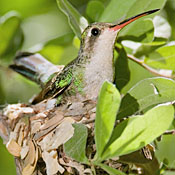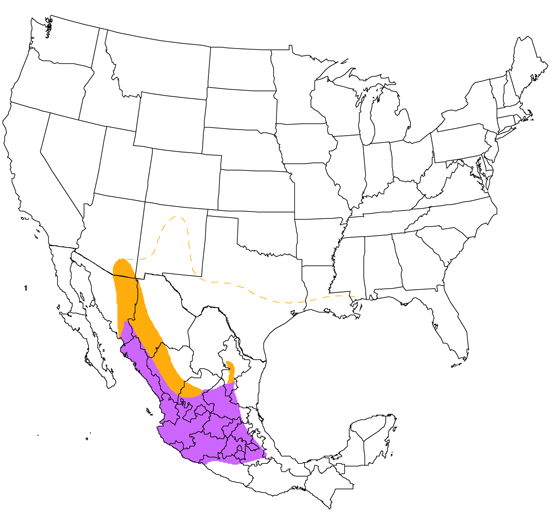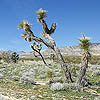Broad-billed Hummingbird
Cynanthus latirostris

Hummingbird

Length: 4 in. (10 cm )
Found at lower elevations near the mouths of mountain canyons, in arid scrublands and desert riparian areas, this hummingbird is readily attracted to hummingbird feeders. In natural settings, however, it feeds on flower nectar and insects and small spiders grabbed from leaf surfaces and flower petals. The tiny, thin-walled nest is made of grass and covered with small leaves and bark and held together with spider webbing. It is placed on small branches in low shrubbery or vines.
The four-digit banding code is BBLH.
Bibliographic details:
- Article: Broad-billed Hummingbird
- Author(s): Dr. Biology
- Publisher: Arizona State University School of Life Sciences Ask A Biologist
- Site name: ASU - Ask A Biologist
- Date published:
- Date accessed:
- Link: https://askabiologist.asu.edu/activities/bird/broad-billed-hummingbird
APA Style
Dr. Biology. (). Broad-billed Hummingbird. ASU - Ask A Biologist. Retrieved from https://askabiologist.asu.edu/activities/bird/broad-billed-hummingbird
Chicago Manual of Style
Dr. Biology. "Broad-billed Hummingbird". ASU - Ask A Biologist. . https://askabiologist.asu.edu/activities/bird/broad-billed-hummingbird
Dr. Biology. "Broad-billed Hummingbird". ASU - Ask A Biologist. . ASU - Ask A Biologist, Web. https://askabiologist.asu.edu/activities/bird/broad-billed-hummingbird
MLA 2017 Style
Be Part of
Ask A Biologist
By volunteering, or simply sending us feedback on the site. Scientists, teachers, writers, illustrators, and translators are all important to the program. If you are interested in helping with the website we have a Volunteers page to get the process started.






